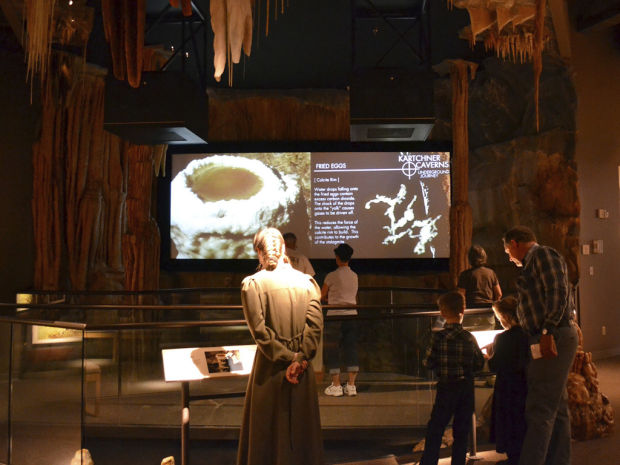Deep inside the dark, damp caves of Kartchner Caverns State Park lies something that sounds more suited to a fairy tale than to a rock formation.
The so-called Big Room holds the world’s largest formation of brushite moonmilk, sometimes called “elf’s milk” — a sparkling white, creamy-looking substance that occurs when bat guano mixes with limestone.
The moonmilk might be nicer to look at, but it’s the bat poop that really makes the cave special, said Robert Casavant, natural resource and science manager for Arizona State Parks.
“The bat guano is the basis of the Big Room’s ecosystem,” he said.
For 10 years, the Big Room has been open to visitors from mid-October through mid-April, when its resident bats migrate elsewhere. The Big Room complements the Throne Room, which opened to visitors in 1999. Arizona State Parks celebrated the Big Room’s anniversary earlier this month with special speakers and presentations, including the dedication of the Kartchner Caverns Underground Microbiology Exhibit.
The new exhibit focuses on the invertebrate life — including spiders, insects, centipedes and scorpions — an ongoing topic of research at Kartchner.
“A study we completed two years ago found over 95 different species of invertebrate,” Casavant said. “Some of the invertebrates we found were never before known to man.”
Because of the bat guano, the Big Room has the highest concentration of these pinhead-sized creatures, but they are just part of what makes this cave so special, Casavant said.
“I love it all — the biology, geology, micro, macro and water science — the Big Room has just got it all,” he said.
The Big Room is the first part of Kartchner explored by Gary Tenen and Randy Tufts, who discovered the caverns in 1974 beneath the Whetstone Mountains. They kept them secret for 14 years before beginning a process with the landowner and officials that led to the state park.
The multiple Throne Room tours that are given every day are the park’s mainstay, but the added revenue of the Big Room tours six months a year has provided a financial boost for Kartchner. That was especially important when State Parks faced tough times during the recent recession, park ranger Rachel Thompson said.
“We faced our lows in 2009 and 2010 with weekly furloughs,” she said.
After an eight-year low of 119,000 visitors in fiscal 2011, the park’s attendance has been steadily rising, seeing 129,000 visitors in fiscal 2012 and almost 132,000 for the year ending June 30.
Volunteer tour guide Dave Ottens said he is pleased to see the recent increase in visitation.
“We enjoy our state park,” Ottens said, “and it makes us happy when visitors come here and enjoy it, too.”





